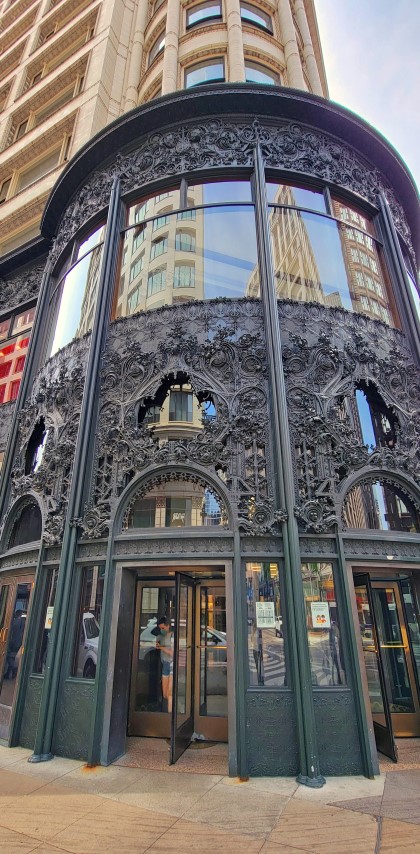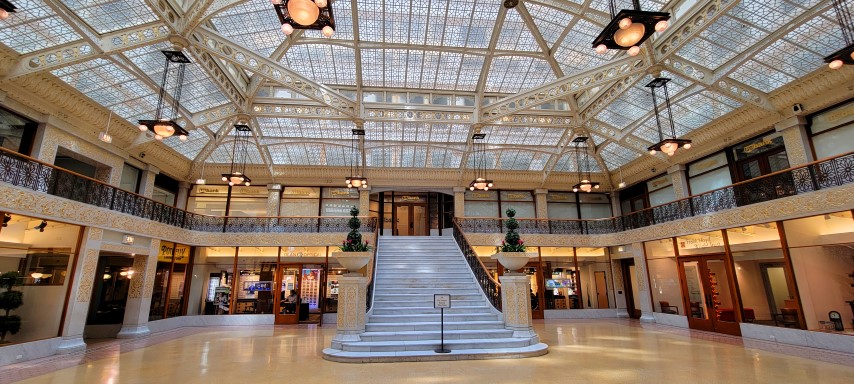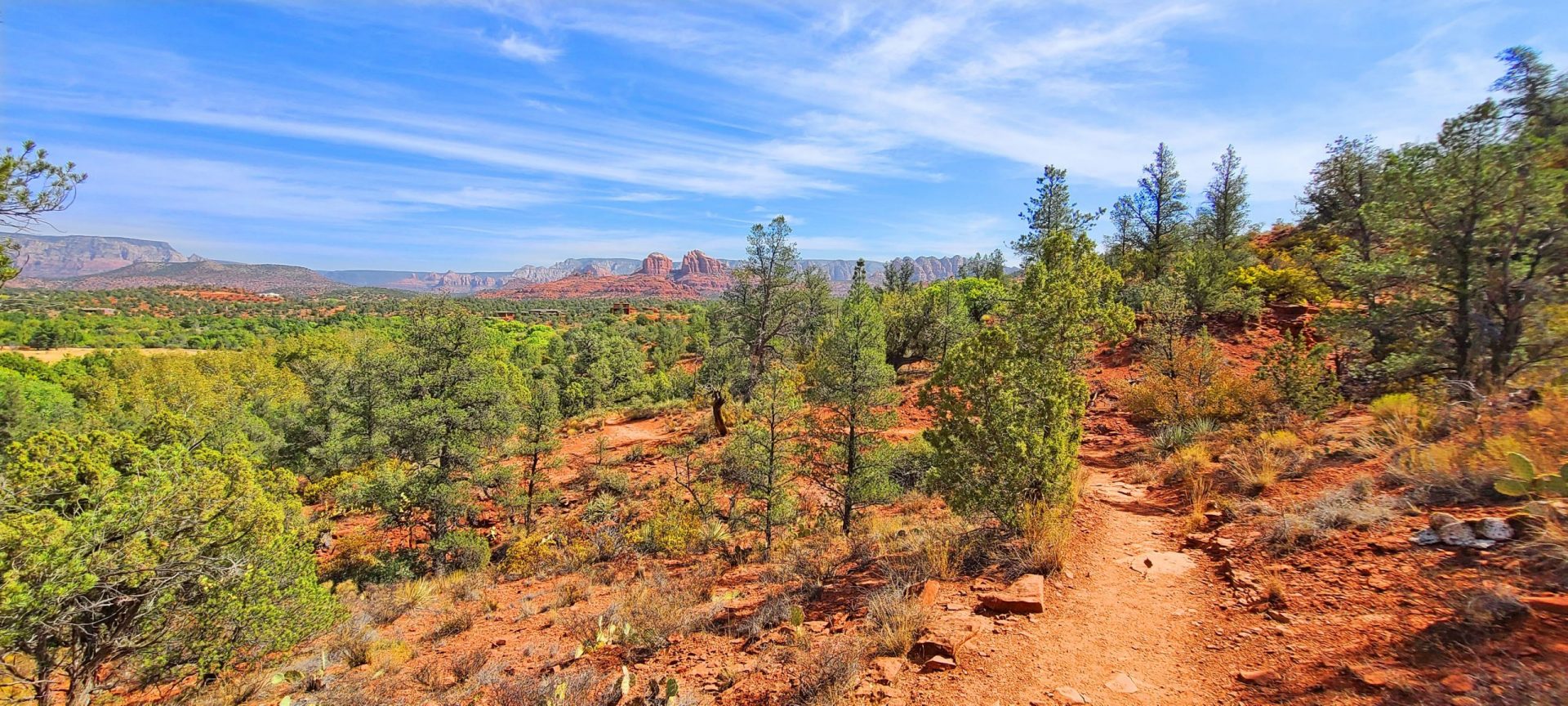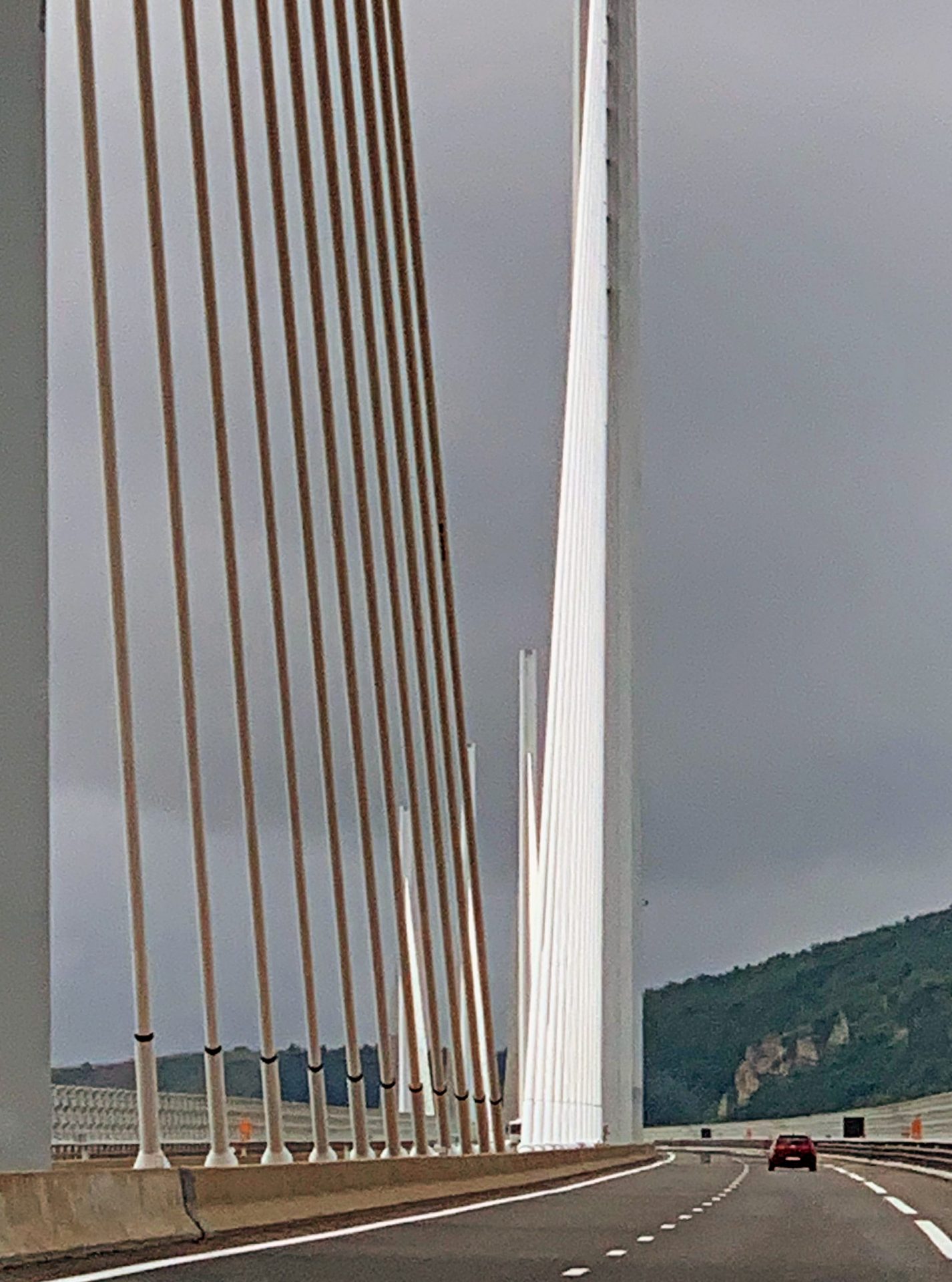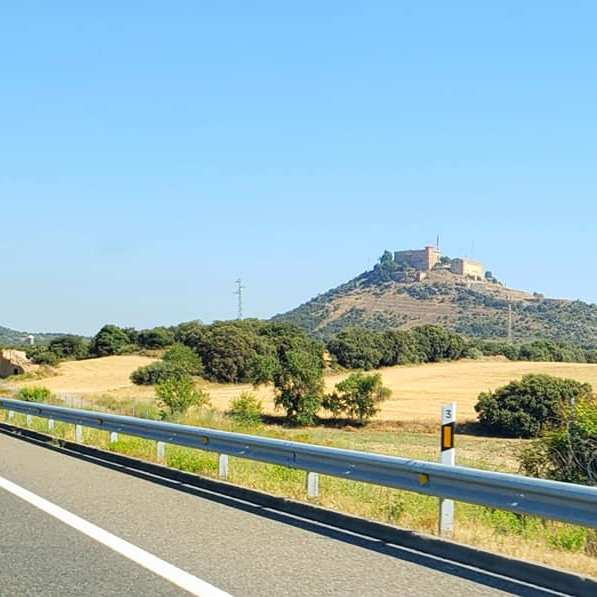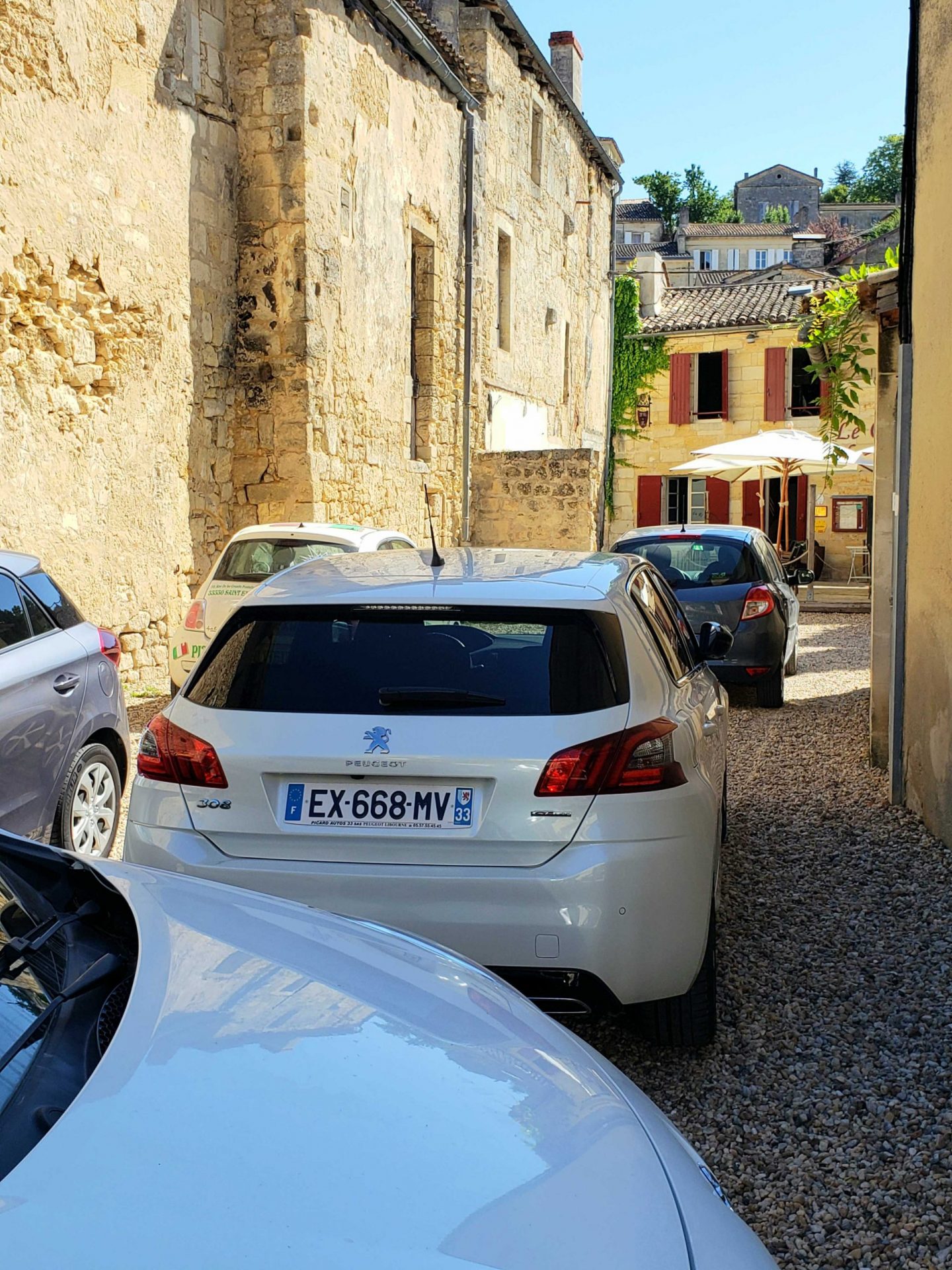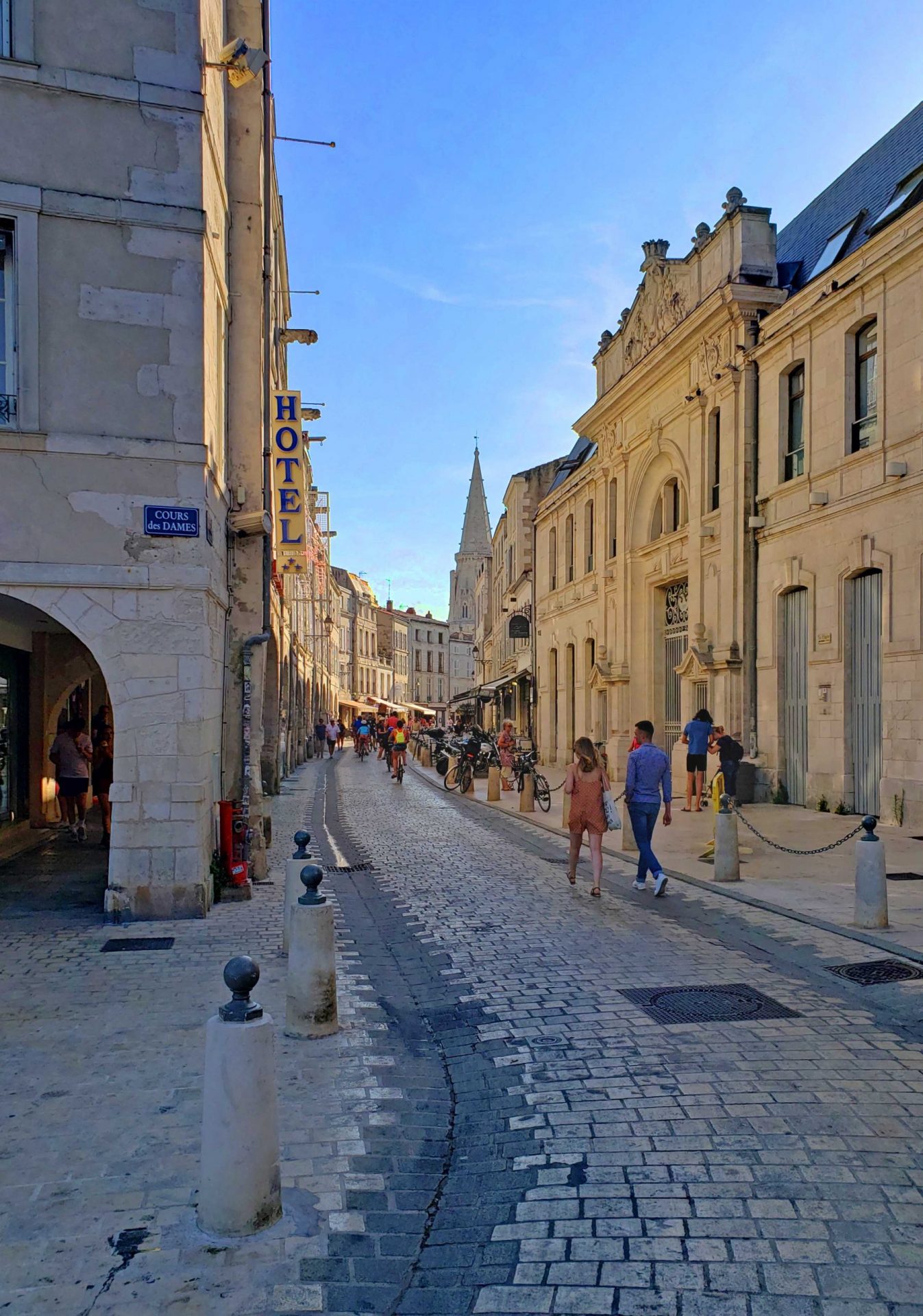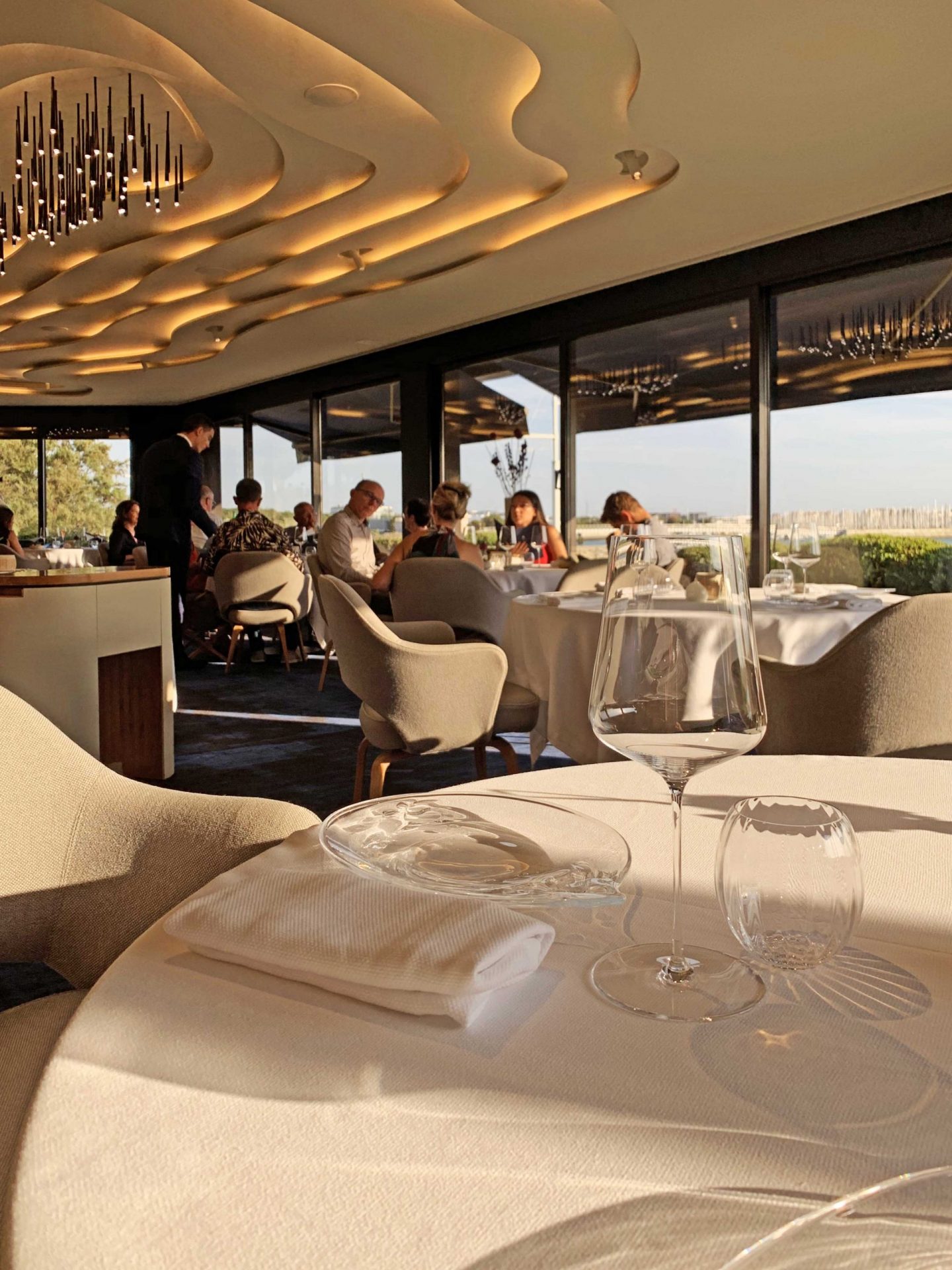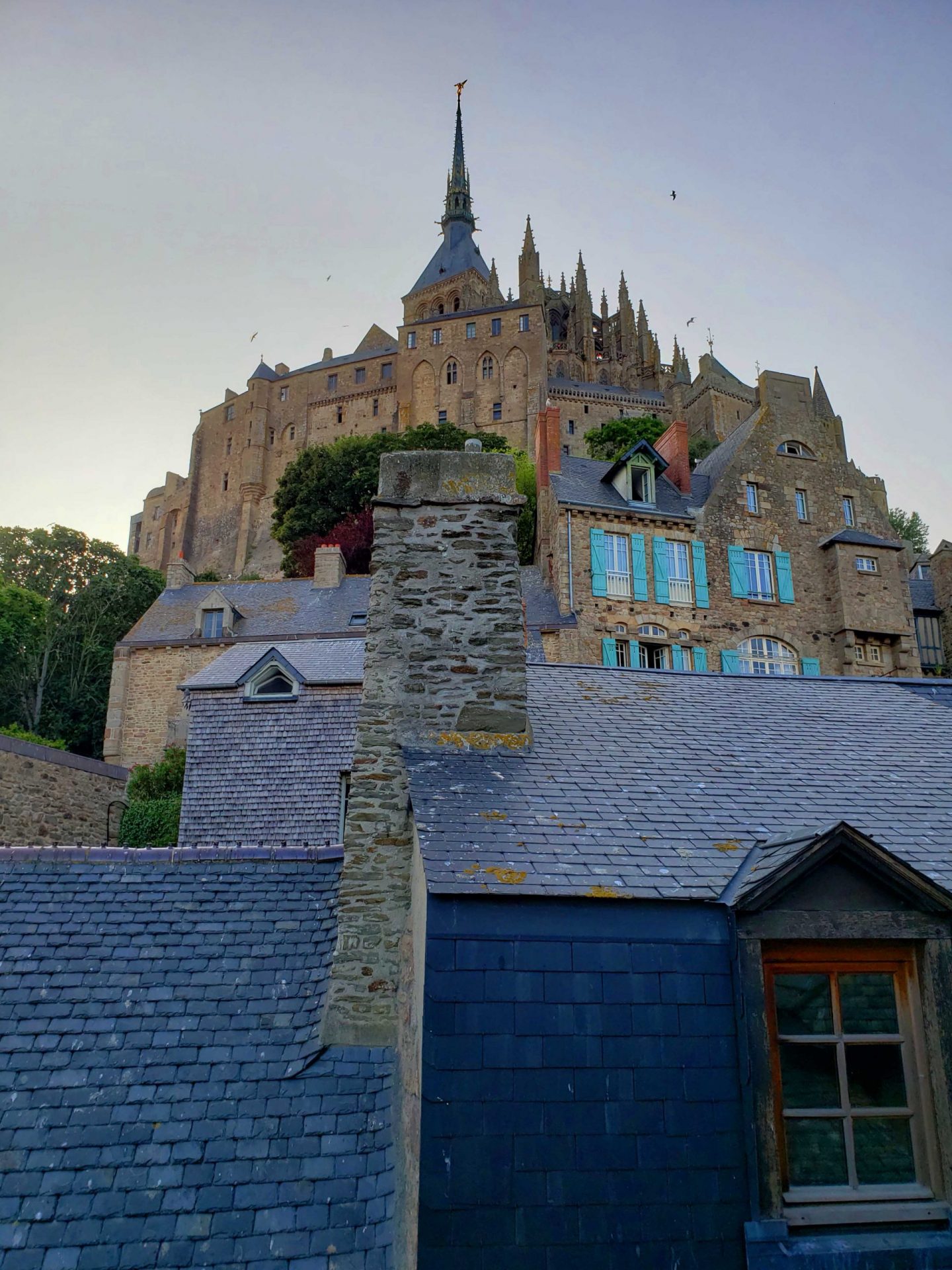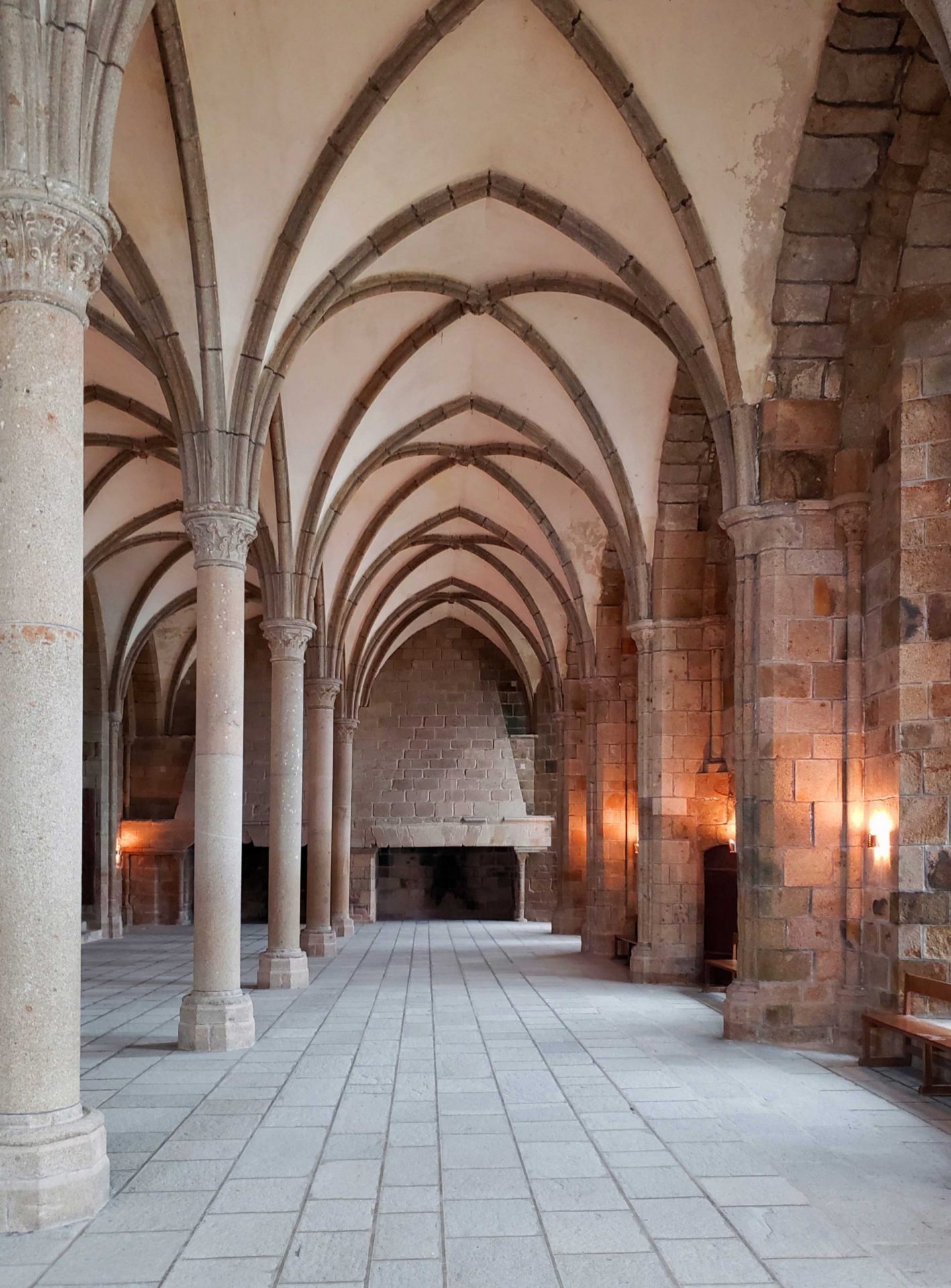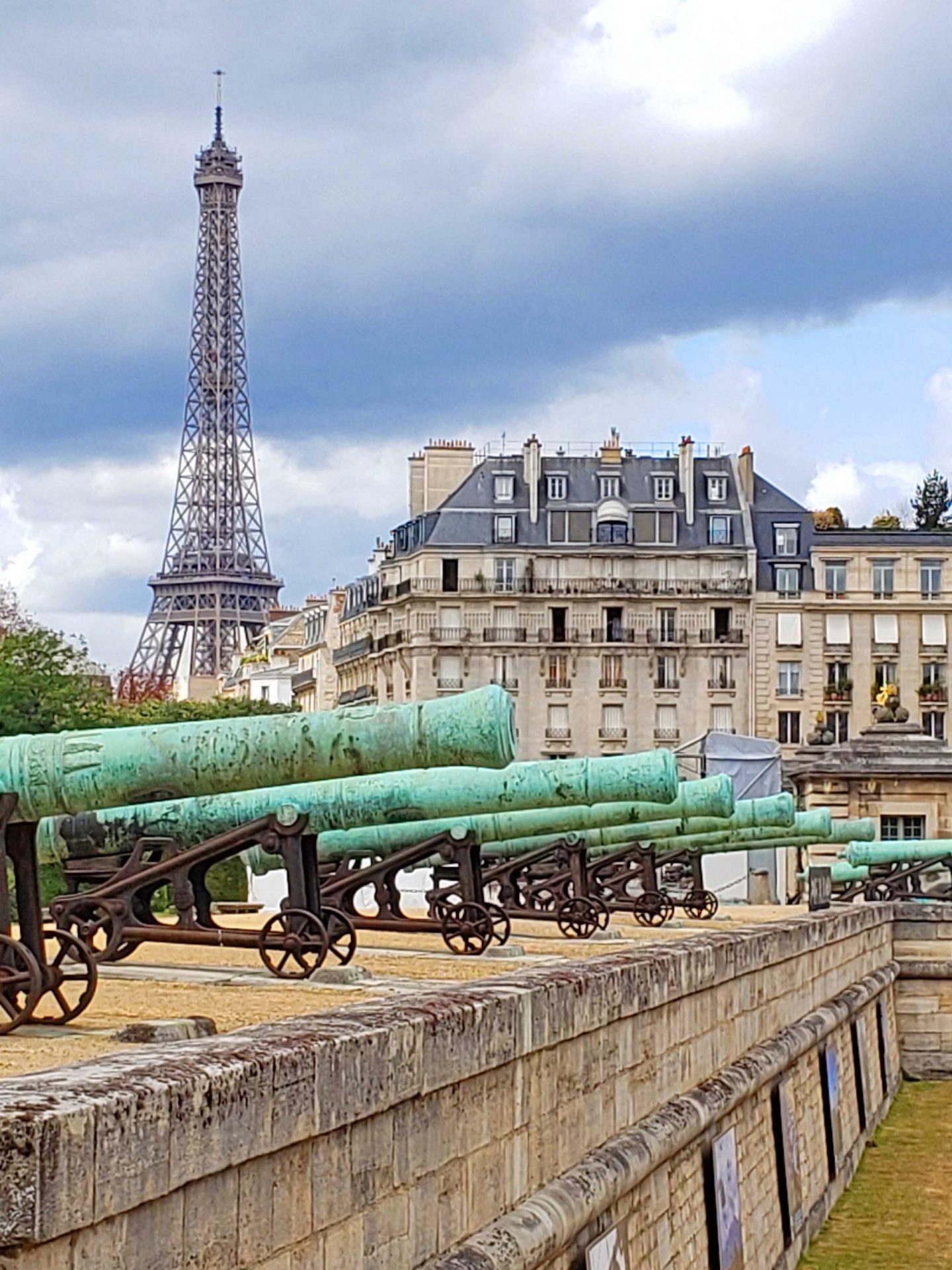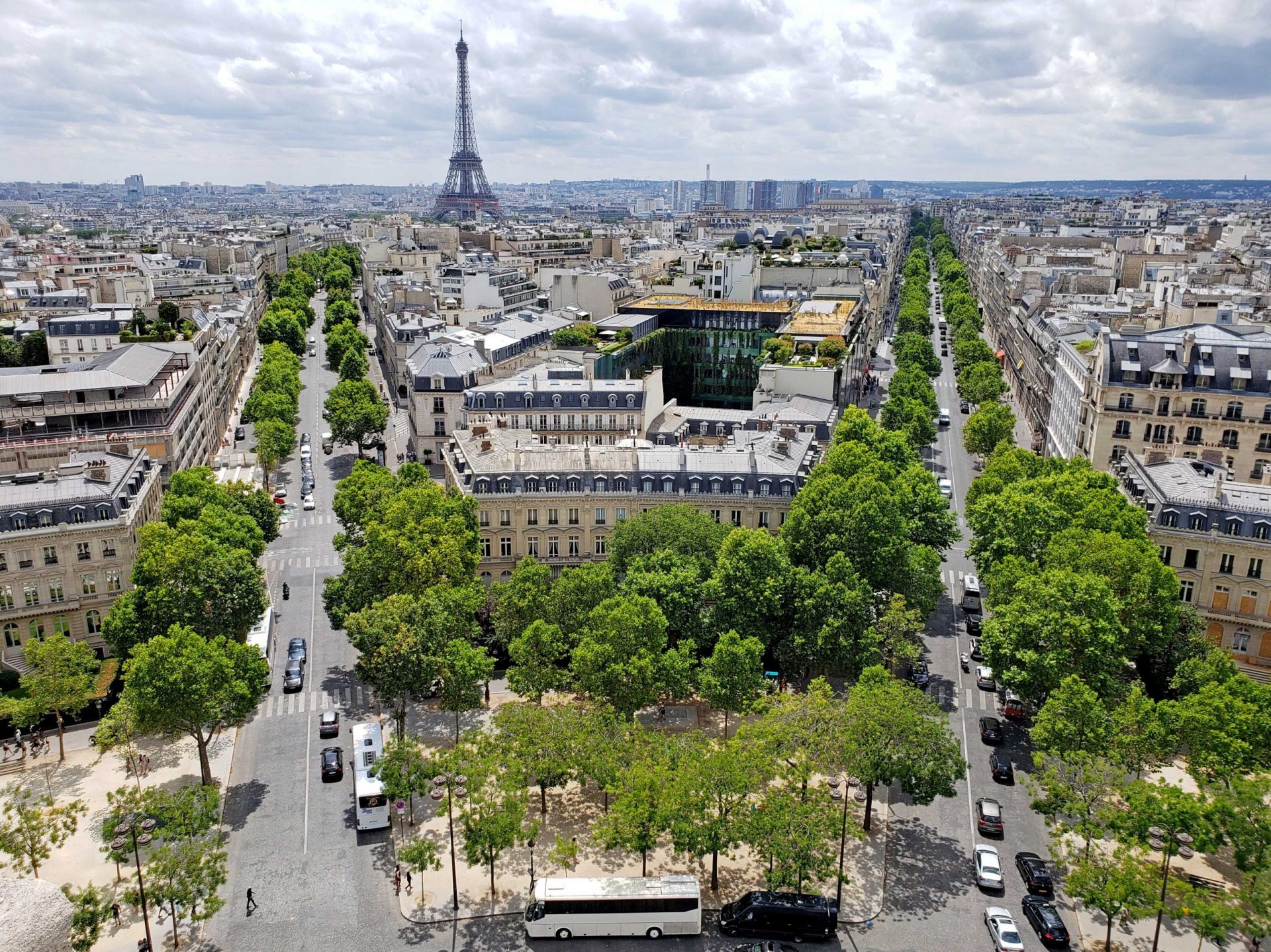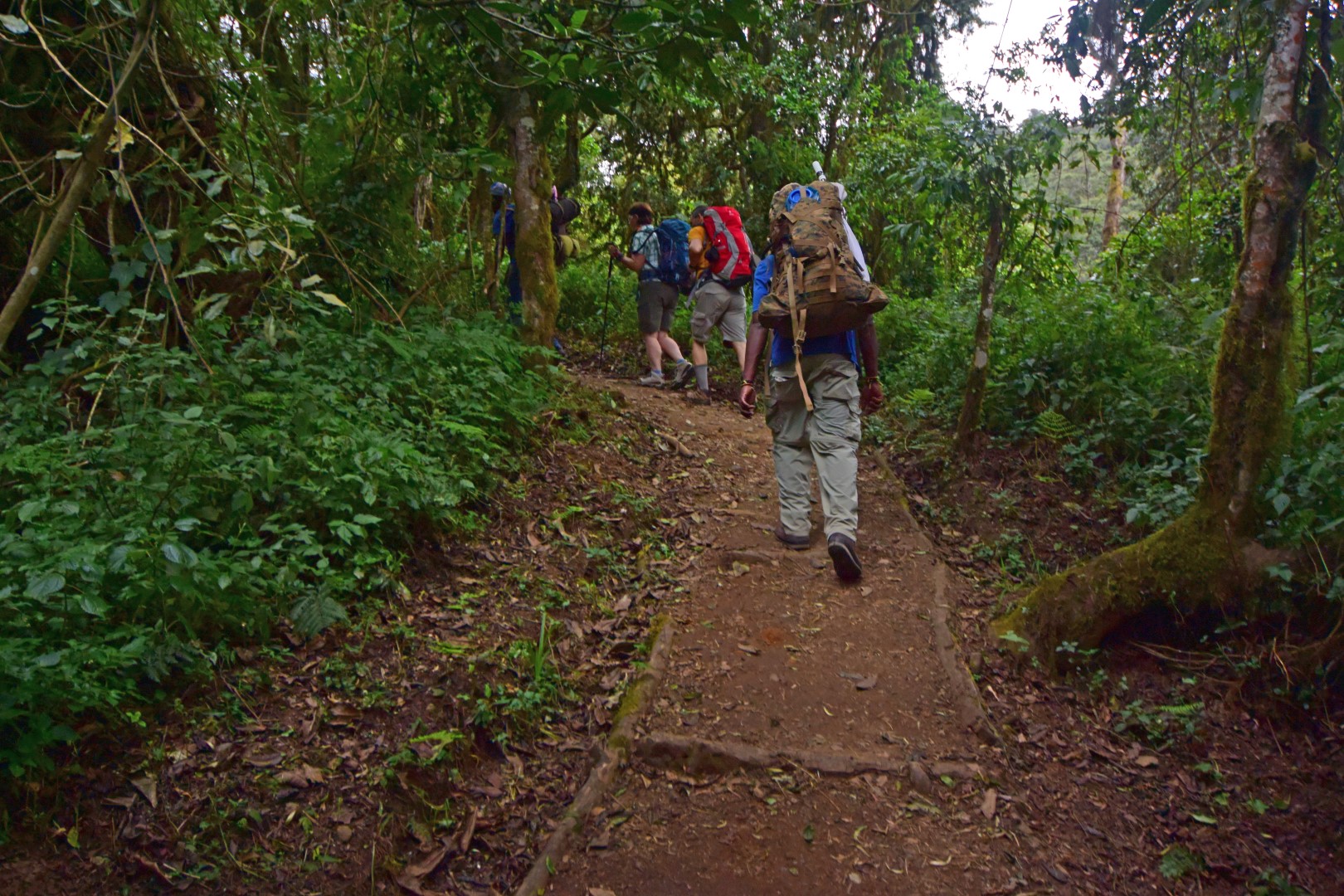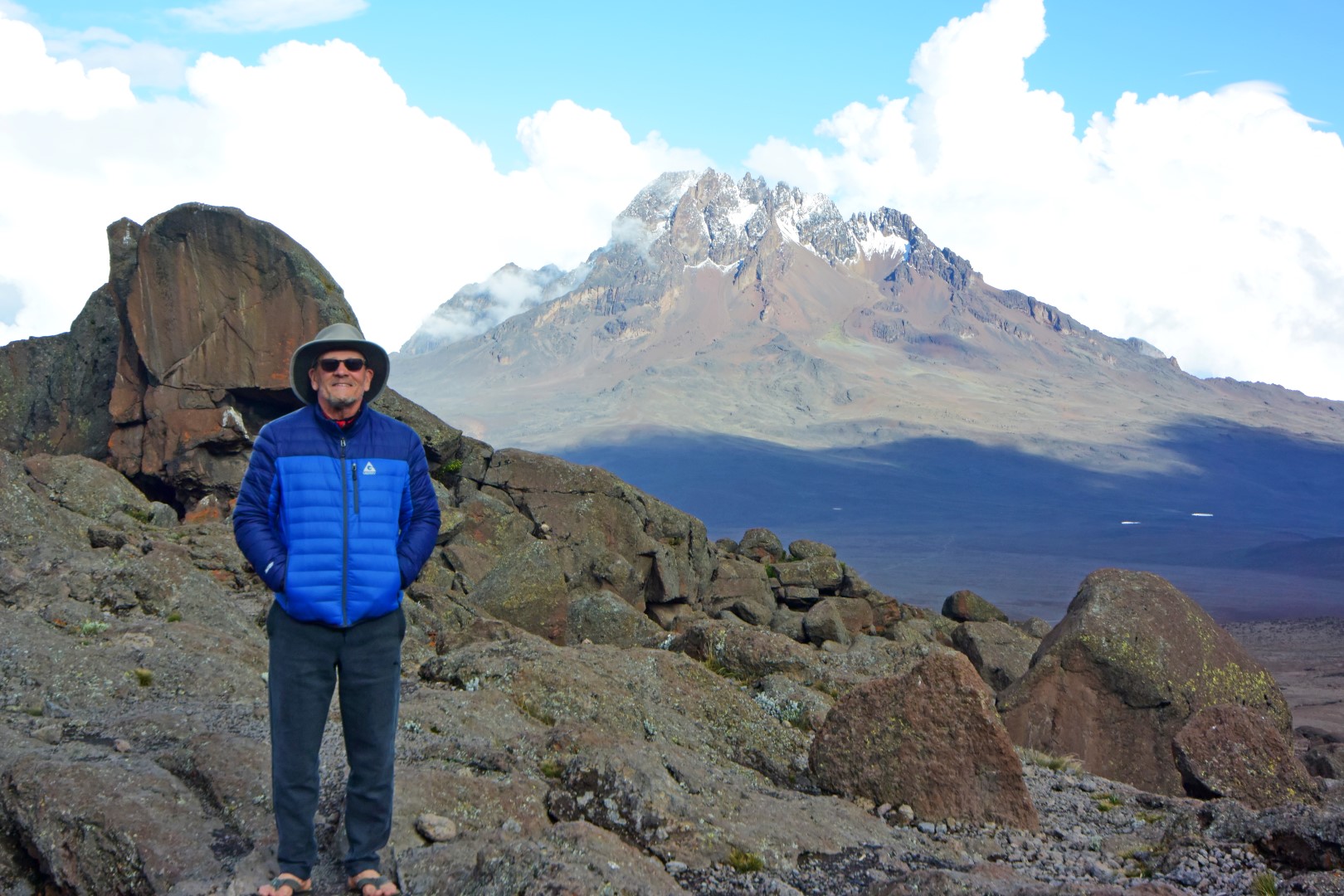May 28, 2022
After two plus years of global pandemics, insurrections and other dystopic dilemmas, Teresa and I have pulled out the luggage and decided it is time to roam again. “Let’s roam to Rome (or close to Rome)”, I said and now we are on the way to Italy, via Uber to the airport. Buon Viaggio!

We arrived at the international terminal. “What was happening?”, I asked the Uber driver. “Was Sherman back and re-invading?” Traffic was at a standstill with cars backed up for half a mile. Our driver noticed that the adjacent lane was empty and used it. “Genius!”, I declared.
Close to the terminal, we hurriedly exited and thanked our French driver. Through the doors we could see a mob. Lines were forming and dissolving. We were caught in a wave of heavily luggaged tourists and were swept to the other side of the ticketing hall. Another line was forming and we were somewhere in the middle of it. A confused looking man floated up to me and asked what the line was for. I explained that, I too, had no idea. Teresa rotated back towards me and asked me to watch her bags and disappeared.
The line surged and broke apart. A pair of young men in front of me unpacked and repacked their luggage at the direction of their mother or aunt floating off in the distance. The line started reforming with the help of an airport employee unfurling a retractable stanchion. Teresa suddenly popped back up with two slips of paper in her hand. Luggage tags! And our passport out of the bobbing mob.
We pushed forward forming a vortex of loose papers and carry on bags in our wake. We were instructed to exit the ticketing hall and check our bags curbside. Once outside, we handed over our luggage and made our way, uneventfully, through security, sans a belt and shoes. Welcome to Post Covid Memorial Day Weekend Travel.

May 29, 2022
We arrived in the morning in Venice and set our priorities. 1, bathrooms. 2, luggage and 3, Desk 71. Teresa arranged for us to take a water taxi from the airport to our hotel. But first we had to find “Desk 71” where we would pick up our tickets. Venice being in Italy and Italians being not very fond of rationality and order (unlike their neighbors to the north, the Germans), finding a desk numbered 71 in a crowded airport with no signs, proved to be a challenge.
Kurt headed right, Cheryl and Teresa headed to the left and I tried to use Google maps. Of course, each of us failed. Still wandering around in a daze, Cheryl finally spotted a small sign with an arrow on a column pointing to Desk 71, the home of our porters. Sadly we were informed that our 20 person water taxi was overbooked so they offered us a speed boat (an upgrade) at no additional charge for the four of us.


In minutes we zooming thru the Venetian Lagoon heading to our home for the next three days, the Hotel Monaco.

Across the “street” from our hotel is Harry’s Bar, famous as the location where the Bellini was invented. It’s also known as a favored watering hole for Ernest Hemingway who included it as a location in his novels.
Teresa and I reflected back on our travels and began to notice a disturbing trend. Our travels have taken place to many locations Hemingway is known for. Havana, Key West, Kenya, Paris, Pamplona, Madrid, Barcelona. Or … or … or (hear me out) is it the other way around? Is Ernest Hemingway REALLY a time traveler from the past presciently laying out our future travel destinations? Zzzzzzzzzzzz.

After a few hours of restorative naps to mitigate the effects of jet lag, we arranged to meet Cheryl and Kurt in the lobby to head across the “street” to Harry’s for a libation. Upon entering the overly tourist-crowded, absurdly-small, uber-unfriendly bar, Kurt said, “We’ve been here, let’s go!”
We headed out. And we headed to the nearest bodega and stocked up on wine, cheese and prosciutto. “Prego”, I told the cashier as he said “Ciao” upon our laden bag filled exit.





What’s for breakfast? In Italy, it’s wine, of course. Buongiorno!
May 30, 2022



An early breakfast and we took off with Cheryl and Kurt in search of museums. First up, at my recommendation, was a new museum located on the point of the Grand Canale. Dogana Museum was recently renovated from warehouses and a winner of architectural awards. Once inside the darkened warehouse we quickly realized that the building itself was the best part. Inside was an art exhibit composed entirely of butts. Video butts to be precise. Marching butts, standing butts, wiggling butts and still. Butts in boxes, butts on stairs, butts over here, butts over there. Fortunately, upstairs was an outdoor area with incredible view across the Grand Canale.





Following the Butt Museum debacle, Cheryl insisted we visit the Guggenheim Museum located nearby. It didn’t fail to impress. These Guggenheim folks sure know how to buy works from famous artists.







After a day of visual arts, we finished the night with a concert at an old church (imagine, an old church in Venice). Eagle eyed Cheryl spotted a poster advertising the performance earlier in the morning and it was incredible. Of course it would probably be hard NOT to be incredible given the settings. Before that, the eagle eyed award went to Kurt who spotted a little outdoor restaurant in a back alley – in a city entirely composed of back alleys. The daily challenges are daunting.



May 31, 2022

A visit to the top of the Campanile, the bell tower for St. Mark’s Cathedral. Twenty years ago on my first visit to Venice I watched a glass harpist performing nearby. It was incredible. Something I had never seen before. I continued exploring. An hour later, I ran into someone from our travel group and he told me excitedly that the glass harpist had just jumped from the top of the Campanile as the bells struck noon. I thought, “How Venetian … what a way to go”. So fitting for the city that tortured Casanova by chaining him up in front of a window in the attic of the Doge’s Palace so he could overlook the beautiful city while being tormented.






Our last day in Venice and time for a tour of the Doge’s Palace, the center of power for the Venetian Empire for over a thousand years. The Doge was the ruler, a Pope-Lite if you will. He was elected by a group of around 200 nobles (thus the “republic” tag) to serve for life. Some Doge’s lived and served for a long time. Others died mysteriously or were found with their heads detached from their bodies. One was nameless (probably named Trump) and was preferred to be forgotten, thus his coat of armor was simply a black square. My favorite was the reluctant Doge who got elected and promptly disappeared. He was found a few months later disguised out in the country as a farmer. He was brought back to the Palace where he served four months before he was, that’s right, found with his body in one place and mysteriously his head in another.
Fast forward a few hundred years and we find the Doge’s Palace to be the scene of incarceration for the famous Casanova, a super smart, 6’9″ tall, well-known local gadabout. Somehow, Casanova wound up on the wrong side of the Doge and, after a few torture sessions, managed to escape the palace by drilling a hole in the lead roof and flying off to New York City where he became a famous film critic. Or at least that’s what it sounded like to me. My hearing is getting really bad.





At sunset we crossed over the Rialto Bridge leaving touristy San Marco Island for the more residential and sedate San Polo Island in search of a trattoria. As luck would have it, we were able to find a small back alley that, luck striking again, had a trattoria. Finishing our trattors, we headed back to the hotel taking the long route. The darkened quiet residential streets occasionally punctuated by barking dogs and chirping nightingales.






June 1, 2022




So, with a couple of hours to kill while waiting for a rental car, what does one do while in Venice. Why, rent a gondola!

After our gondola excursion we headed back to the hotel to pack up. Leaving Venice, we boarded a water taxi at our hotel and jetted to the road bridge connecting Venice to the mainland where we picked up a rental. A Fiat.
We headed north into the real City of Venice. The Venice where all the employees that work on the islands of tourists live because, now, housing is so expensive and rare due to the glut of AirBNB rental properties. The real Venice is industrial and ugly, especially in comparison to the magical Venice we left behind.
We continued heading north on the freeway, from which out of the haze, appeared the Italian Alps. More precisely, the Dolomites.

From there, it was a quick but winding journey (with occasional pull-over-and-gawk moments and a stop at a biker bar) to the north to the Dolomite Mountains that separate Italy from Austria where our rented chalet was located. And by quick I mean three hours from the warm lagoon waters to the still snow covered massive stone mountains shaped like teeth. Big ass teeth.




After settling into the chalet, I escorted the two Swiss Misses to the center of town (100 feet away) to go grocery shopping. Part of the fun of foreign travels is foreign shopping. And what a selection they had.




While the two SMs were battling it out over what to get I went to the check out clerk to interrogate her. The store was empty so I thought maybe she could tell me about the local culture. I asked her whether the locals speak Italian or whether they speak German since a lot of signs are in German and this location is about 10 miles from the border of Austria while still Italian. She said, “I speak Ladin”, which is a mix of Italian and German and the “locals” consider their culture “Ladin”. (PS, no bin Laden jokes allowed … don’t make that mistake). So, “Germalian”, I said. She was not amused.

Chagrined, I exited stage right and waited for the Swiss Misses to complete their shopping. Lessons learned: Don’t assume there is no local, historical and significant culture and for $100 you can buy six bottles of quality top shelf wine along with meats, cheeses, hand made breads and chocolates when NOT in the USA. Inflation may be worldwide, but it ain’t happening in this corner of Ladinland.
June 2, 2022
Having settled into our Alpine Condo, in the morning we went back into town for breakfast provisions … freshly baked bread and treats. No chicken and biscuits in these parts.

Back at the condo, we made plans for an early morning hike, in preparation for the next day’s longer planned journey. At our visit to the biker bar yesterday we noticed on the other side of the highway a cable car in operation that took riders to the top of a steep rocky mountain. “I know, let’s ride to the top the mountain and see what’s up there!”

Arriving at the mountain summit, we exited the gondola and entered an other worldly cloud shrouded landscape. A ski lodge sat on a ridge of the mountain, overlooking the valley far below. Looking back down, we could see the Alpine biker bar where we parked, now a small black dot.



Clearly marked trails climbed further up from the ski lodge, which we followed. In the distance, about a mile away, was a summit at an elevation of 9,000 feet, with what appeared to be a cell phone tower. On second glance, it was a cross. We are still in Italy, of course.


After a while and an easy hike, we reached the cross perched on a peak quaintly named, “Monte Lagazuoi Piccolo”. Further in the distance we could see the trail continue on into the Italian moonscape, the trail crossing a very narrow thin ridge that dropped off on either side a hundred feet or more. Two hikers could be seen navigating the rocky tightrope. “Nope”, I said, “Not going to do that route. Not with my vertigo.”

On the way back to the ski lodge, Kurt found a new toy. A “mule” with snow treads. If only Atlanta was regularly buried in snow. One can dream.

We stopped for group photos, admired the valley views and headed back down by cable car.





A quiet evening presaged by dark clouds and echos of thunder as storms rolled through the mountains. To make things even quieter, it is a national holiday in Italy. Republic Day. I’ve no idea what it celebrates or commemorates. Likely the Italian version of Memorial Day. And the Italians take their celebratory / memorial holidays seriously. Everything is closed except for graveyards. In search of ice cream, a failed assignment for Kurt and me, we found a unique cemetery with each grave highlighted by a custom made metallic “headstone”. Striking and beautiful.



June 3, 2022

“It’s a dangerous business, Frodo, going out of your door. You step into the road, and if you don’t keep your feet, there’s no knowing where you might be swept off to”
– Bilbo Baggins
The day started off beautifully. The air cool. The morning light and sunny. I returned from a short walk with breads and treats from the bakery. Inside the chalet, Cheryl, Kurt and Teresa discussed our plans for the day. We would visit a nearby national park and hike around the centerpiece of the park, the Tre Cimes. The “Three Tops” in English. Three enormous shards of granitic gneiss jutting up over 10,000 feet. I referred to them as “The Three Amigos”. (yeah, I know) I had done some research on hiking trails on the AllTrails app and found an “easy” trail only 4.3 miles long. Pictures showed a wide and smooth trail winding around the base of the pinnacles. I had downloaded the trail maps and everyone was ready to go except Cheryl. Somehow premonitionally, Cheryl decided she didn’t want to go.

Leaving Cheryl behind, we headed out. The road twisted and turned into knots as we descended to the valley floor to our east. The largest village lay ahead, Cortina D’Ampezzo. Teresa called it the “Vail” of the Italian Alps. It was beautiful and filled with luxury shops and exotic cars. The center of skiing and home to the upcoming 2026 Winter Olympics.
Another twenty minutes and we arrived to the park entrance. And to a wall of stopped traffic. We were stuck in traffic. Stopped. And for five minutes we didn’t move. Was it an accident? Was there a moose in the road? The car in front of us finally rolled forward. Kurt let the clutch out and we rolled a hundred feet, turned a corner and stopped. Up ahead a few thousand feet was a toll booth. Like we were trying to enter Yosemite or something. Motorcycles and bicycles raced past. In fifteen minutes we pulled up to the toll booth.

The toll booth worker shoved his large hand out of the small toll booth window commanding us to stop. “HALT!” We had already stopped at the red light behind the car in front of us. Did he want us to stop even more? The car in front of us pulled out. Kurt pulled up and stuck out a handful of Euros. The operator took them and examined them closely. Then he fiddled with the keyboard for a while and finally leaned out of the toll booth window and pointed to a just printed ticket poking out of a ticket vending machine next to his window. Five minutes later and we were on the way to the parking lot.

We got to the lot. It was crowded. No spaces. Kurt drove around the large three floor hiker lodge and pulled over to let me and Teresa out. The lodge was closed. “Bad omen”, I thought. My research on AllTrails indicated this place was a beehive of activity. One of many on the trails that offered food, drink and overnight lodging for hikers. The trails were full of hikers just like the parking lot. How could it be closed?

Teresa and I went to the trail head. It was wide and level. Kurt showed up and we headed off. “See!”, I said. “It’s just like AllTrails said. Easy Peasy.”

We followed the trail up to a ridge that overlooked a green valley to our right far below and a separate landscape in front of us, forbidding, and filled with boulders, jagged rocky peaks and barren. “It looks like Morder from Lord of the Rings”, I thought. I checked my map and pointed to the level trail hugging the base of the Tre Cimes ahead. “This way”, I told them.



We continued on. Scale was confusing somehow. What looked like the halfway point was suddenly just the start as we climbed over a ridge. Up ahead we could see hikers further down the trail. Ants. Snow draped down from the flanks of the towers. “Probably remnants of winter and only a few inches thick. It’s June and likely to be gone soon”, I reassured myself.

In an hour we got to the snow seen from so far away. It was crusty but thin. And slippery. Kurt led the way. “Dig your heals into it”, Kurt suggested. We did. Teresa struggled with street shoes. I had hiking shoes, but not my heavy duty boots.

We struggled thru the increasingly deep snow, slipped and falling. We were approaching a dry ridge. From where we were, I could see our trail on the flank of the mountains about a mile ahead. It appeared dry and easily navigable.
We climbed up the ridge. It was filled with boulders and jagged rocks. Rounded rocks the size of billiard balls rolled under my feet causing me to lose balance. The rocks clinked loudly as they scattered from under our feet.

“Slowly. Slowly”. “Pole pole”, I heard in my mind from our long lost Kilimanjaro guides. It was getting bad. The snow was getting deeper. I stepped into deep snow and sank to my belt. I tried to get back up but the snow started to pull my shoe off. I stopped and started slowly again, keeping by shoe on my foot. Clouds were forming above us on the leeward side of the rock monoliths immediately above us to our left. Thunder started to echo across the barren valley below us.

We struggled across the next field of sloped snow, carefully trying to place our feet in the previous footprints laid before us. Some foot prints disappeared a few feet down into the snow. “Don’t step there”, Kurt said.
We were now in much deeper snow on the trail. Footprints of previous hikers helped but it was increasingly more difficult. We probably should have turned back but we could see ahead of us hikers abandoning the trail and heading downhill thru the rocky shards to the valley floor a few hundred feet below.
We abandoned the trail and turned down slope to follow the ant like hikers ahead. We were off trail and in a dangerous grouping of rocks. Kurt bounded from rock top to rock top but Teresa and I struggled to maintain balance and find sure foot holds.
A young German hiker passed us and chastised Teresa for wearing pink street shoes. “Schweinehund!”, I called back in thanks for his helpful suggestion. We struggled on.

On the descent we could see a real trail further past the valley floor. “That looks like an easy trail”, I offered. All I could think of was getting to that trail. The thunder grew louder.
Kurt managed to get to the valley floor and climbed up towards the trail that was our new destination. The ground was getting more grassy and less rocky. Alpine flowers sprouted from the rocks. Deep blue and yellow. “The colors of the Ukrainian flag”, I thought. Teresa and I wound our way down following Kurt’s lead. It was difficult.

We lost sight of Kurt so Teresa and I tried to find the least rock strewn path that would take us back up to the “real trail”. In a while, we found a ridge of grass. Kurt appeared to our north a hundred feet away. Teresa and I followed the grass ridge and reconnected with the trail. “An easy trail”, I told her.
We jumped down to the somewhat groomed trail. It was at least walkable. There was an immediate steep section to get up but we were relieved to be on it. Then it started to rain.

The trail was made of small and various sizes of rocks and patches of black soil. Rain turned that into a slick goo. Like thick oil combined with ice. Teresa fell, her legs slipping forward and her body falling backward.
“Uh oh”, I yelled. I slid forward to help her up. Kurt rushed back to see if she was OK. Teresa got up. She said she thought she was OK but had injured her hand. Off in the distance on the trail ahead I spotted a building. “Look. A hiker lodge up ahead on that hill. Let’s go there and rest and see how Teresa is doing. Maybe it’s open”. It wasn’t.
We got to the hiker hut and laid back on the grass. The rain had stopped. At this point we were only a mile from the car. It would require climbing back up over a saddle ridge between summits but there was no other way. A couple of hundred foot climb.

We climbed up the trail to the high point we could see ahead. The trail narrowed. Rocks slid across our path from the steep slope to our left. Inches away to our right, the trail sloped steeply downward, following a dry wash. I looked back over the valley we just struggled thru. A two hour hike had taken five hours. What was supposed to be a 4 mile hike doubled in length. I was happy to be leaving.

Kurt offered to run ahead and get the rental car. Teresa and I slowly made our way up and down the final stretch of trail to a large, and now empty, parking lot. Just as we entered the lot, Kurt crested the hill in the rental honking his horn and flashing his lights. He pulled up to us and I helped Teresa get in the back seat to lay down. A heavy rain began to fall.
Cheryl was right.
June 4, 2022

We’re on the way to Milan this morning. The route out taking us thru miles of Alpine vistas. The air, after yesterday’s storms, clear and crisp. The colors of the scenery vibrant with Cerulean blue skies and evergreen trees Kelly.






The road wound up a mountain pass lifting us above a low cloud bank taking us past endless ski slopes, chair lifts and bicyclers. Everywhere centers for physical activities for all seasons. Everyone young, fit, handsome and tall. A master race in the making decked out in biker shorts.
At Bolzano, Google Maps directed us to the A22 freeway which we could see 100 feet in the air above us on a viaduct that twisted and wove along with us on the valley floor occasionally punching thru tunnels in the adjacent hillside.
There were no entrance ramps to the elevated freeway so we drove several miles before finding one. Kurt entered the ramp and accelerated. It was smooth sailing. For a kilometer. Then we hit the wall.
Both lanes of the A22 were filled with stopped cars, campers, trailers and trucks. License plates all showed they were German. Just our luck, after Googling German holidays we discovered that, like Italy, Germany started off the summer season with a national 3 day holiday. Today was the start. And Germany was being evacuated.

After a couple of hours of stop and go traffic (mostly stopped) we exited the A22 freeway and headed west with light traffic leaving the Germans to slowly lurch southward like a bunch of Indianans heading to Florida on I-75 for spring break. We sailed on with Milan in sight.
Teresa and I arrived in Milan. After checking in to the hotel, we met up with our tour group for the next week. Composed of mostly Australians, I was asked continually where in Australia I was from. “Coober Pedy”, I would reply, our travel mate’s eyes widening. “Naw, just kidding, mate. Atlanta. Put another roo on the barbie.” The week ahead is going to be an adventure.
We boarded the bus for the heart of Milan where a restaurant was reserved for our gathering.

“Molto bene! Molto bene!”, I gestured to my new found Brisbanian friends, my hands, arms and fingers gesticulating wildly and spastically as if I was adding something to the conversation as we stood on a narrow street outside the restaurant. “The dinner was excellent!”.

June 5, 2022
The day started early as the bus picked us up and dropped us off at the historic center of Milan, the Duomo di Milano.

Milan strikes me as a modern city much like Atlanta but with 1,000 more years of history and culture. It lacks the Magic of Venice or deep ancient history of Rome. It proudly boasts that it is the center of Italian industry in much the same way that Atlanta brags that it has the busiest airport in the world. Such claims to fame do not translate into great traveling experiences.
That being said, Milan has incredible historical sights that we spent most of the day enjoying. The Galleria, the Milan Cathedral and La Scala, the heart of the operatic world.









Late afternoon and our tour group headed out for a boating tour of Lake Como, an hour north of Milan. Named after the incomparable Perry Como, this lake is a popular destination for locals and big celebrities like George Clooney. Unfortunately, the weather for our visit was getting bad with thunderstorms and high winds.

We arrived lakeside just after storms had blown through and pulled up to a boat peculiarly named the SS Minnow which bobbed in the turbid water. Our tour group, consisting of mostly 20 Aussies, climbed aboard and we set sail for a one hour tour. A one hour tour.

The weather started getting rough, the tiny Aussie filled boat was tossed. Teresa stayed below deck while I headed to aft deck to check things out. (OK, that didn’t rhyme but you get the drift).
The boat headed north digging into the waves that were whipped up by the strong winds. Waves crashed over the top of the boat soaking the skipper and passengers on the aft deck. The air was cold especially when compared to the hot and humid conditions earlier in Milan.

After fighting our way north on the lake for several miles, the weather started clearing and we turned eastward and headed to the opposite shore.
The shoreline was filled with incredible lake houses and Italianate palaces. While many were still boarded up for the season, some homes were filled with people and children jumping from docks into the cold waters.







The air clear now, we headed back to the city of Como and disembarked. Teresa, Kate and I wandered thru the open plazas and side streets looking for a place to eat and have a drink.
We settled on an outdoor cafe at the end of the plaza, the bright setting sun shining in our faces. A waiter came by and took our order. A jazz trio next to us under an umbrella suddenly began playing while the vigorous wind whipped palm fronds and table cloths into the air. After finishing dinner, we headed back to the church to reflect upon the day and to await our return trip.


Tomorrow’s itinerary: Lake Sinatra.
June 6, 2022

Slaughterhouse Twelve – Chapter One
(WARNING: SOME CONTENT MAY NOT BE SUITABLE FOR ALL AUDIENCES)
The bus turned onto the ramp and headed down the A1, a freeway heading to Rome, following the Apennine Mountains, the bony spine of Italy. Our destination – Parma, home and namesake of Parmesan cheese and, much to my yet future surprise, the center of the prosciutto industry.
The freeway ran straight thru flat and green farm lands. A train line paralleled our route with occasional bullet trains shooting past making it seem as if we were standing still. Very surprising to me since the last time I rode an Italian train (the same route actually) the situation was reversed with auto traffic flying past our old, filthy and lumbering (and perpetually off-schedule) train.

We arrived in Parma, a quick two hours south of Milan, late morning. Everyone on board excited, looking forward to our “prosciutto tour”.
The large white tour bus labored up the narrow winding roads to the tour destination ahead.
We pulled into the parking lot adjacent to the prosciutto factory in the middle of rolling hills filled with pigs. Several white robed employees came out to greet us headed by the young daughter of the factory’s owner. Their heads covered by mesh caps. “Cleanliness over godliness”, I said to myself.
As we stepped off the bus, we were handed surgical garb and head coverings. Some were teal colored but others, myself included, had white. I hoped it wasn’t an indication of rank or something else.

We all donned our gear and headed to the door of the factory looking like a group of extras from M*A*S*H or some other medical show on TV. Everyone seemed excited.
Off in the distance somewhere, loud squeals could be heard.
We entered the building one by one. The floors wet, the air cold and damp. Loud buzzing sounds could be heard between occasional muted thumps. The air smelled. A hard to describe stench that permeated everything. Only those sick with COVID would not be overwhelmed.
In front of us was a conveyor system and racks and racks of discolored pig parts.
Two men to our right in the midst of these smelly carcasses stopped and stared at us blankly. Another group of visitors passed us single file heading to the exit with several children. I’ve never seen Italian children with that look on their faces before. Or any other children for that matter. Not even at Disneyland.


The owner’s daughter started her presentation and described how prosciutto was made. In a “sweet-a, sing-song-a voice-a”, she cheerfully described how the pigs were electrically shocked and then beaten to death.
We proceeded to the next cold chamber amidst a cornucopia of squeals, sights, smells and sounds. More pig parts filled our sight from floor to ceiling.
Our young Gina Lollobrigida continued forward into the next chamber to describe the curing process. Salt from the area, mined since the days of the Roman Empire, is packed onto the pig parts. Proudly, she revealed that only one person in the company is allowed to rub the pig parts with salt. Her uncle, Luigi. Well, we all have our hobbies, I guess.
Using a sharpened thigh bone from a horse, she poked into and prodded the stinking, salty pig carcass. Withdrawing the bone, she sniffed it. Smiling broadly, she said the smell indicated that the hunk of meat was well on its way to becoming perfect prosciutto. Bravo!

With the tour done and new mental scars formed, we headed to the gift shop for a sample. Laid out on tables before us were plates of the prized flesh. Demurring, I told my fellow travelers that they could have my sampler plate. Immediately, like a pair of seagulls fighting over a fish head on a pier, Kurt and Kate began pushing each other away from the thin rotting shreds, each grabbing handfuls and shoving them into their gaping maws while Teresa bought a sharpened horse thigh bone.
Next up: The Horse Slaughter House Visit.
June 7, 2022
We overnighted in Parma and in the morning took off on a walking tour led by our guide, Cindy, from Minneapolis but who has lived here for 45 years. Cindy met a local man who couldn’t speak English and she couldn’t speak Italian. They got married. That’s amore!

Cindy led us from the hotel to the historic city center nearby. Her presentation in a voice and style that sounded much like David Attenborough. At times dramatic and at other times in a slowing whisper.
Parma was home for Verdi, the famous opera composer. In the 1800s during his life, his music was used to inspire rebellions against Austrian and Spanish occupiers. His name was used as a battle cry. An anagram that spelled out “Vittorio Emanuele is King of Italy”.







June 8, 2022
After leaving Parma, we headed southwest to La Spezia, an Italian naval port located on the Ligurian Sea, where we spent the night.

In the morning, our group gathered and boarded a local ferry for a day trip to Cinque Terre (chinkwa tera). Teresa and I headed to the upper deck for the show. While still boarding, two Italian ladies got into a kerfuffle over seating. A scrawny one started pushing a gargantuan one over a seat between them. After lots of animated gesturing and lots of yelling in Italian that sounded like “TUTTI TUTTI TUTTI!!!”, the whole affair was somehow quickly settled with Gargantua winning. A wise choice for Scrawny.

The ferry boat passed by several colorful cliff side villages before depositing us in Monterosso where we wandered around until we found a place to eat. I ordered a salad but, us usual, it contained no parts of what you consider a salad (hint: lettuce) but lots of tentacles.
Yum!






June 9, 2022
A long day as we begin winding down on our Magical Mystery Tour Bus Tour of Northern Italy. We left early in the morning from La Spezia and headed northwest to Genoa (Genova in Italian) located on the Italian Riviera Coast.

While the bus drove along the elevated freeway, our tour guide, who had been mostly silent all morning, started yelling, “PIANO! PIANO! PIANO!” Expecting to see some incredible Steinway sitting on the shoulder of the road, I was brought back to my senses as the bus slammed on its breaks slinging everyone forward. A car, stopped, was sitting in our lane and abandoned. I now know that the word, “piano”, means, “SLOW DOWN YOU IDIOT” in Italian.
The rest of the drive into the center of Genoa was less eventful.

Genoa is the birthplace of Christopher Columbus as well as blue jeans. That’s right, blue jeans. Now get ready for your next trivia contest.
Jeans (pants) were invented in the 1500s (plus or minus a few hundred years) and were called “Jens”, derived from the word “Genova”. The fabric they used was made in Nimes, France, thus the origin of the word “denim” and it was the color blue. Thus, Denim Blue Jeans.




After Genova, we turned northward and in an hour stopped at San Giulo, a village on the shore of a small lake with an island in the middle. Lake Orta. We boarded a ferry boat that dropped us off at a church on the island and a (very quiet) nunnery, The church tour guide again sounded like David Attenborough with the slow soft talking followed by a whispered conclusion. It’s obvious to me now that it is all a learned schtick but still engaging and effective. The highlight being the tour guide’s hushed narrative describing in the smallest of detail how saints were BBQ’d alive. I will skip dinner tonight, I told myself.





After a long day, we reached the end of the line for this phase of travel in a lodge overlooking the shores of picture perfect Lake Maggiore.

Time for some down time.
June 10, 2022
Lake Maggiore. Lazing away. The weather perfect with a light summer breeze. Like living in a Seals and Croft album. (Sad to hear that Jim Seals just passed away this past week.) Tomorrow we begin our long and complicated journey south into the hills of Tuscany. Expect fireworks.






June 11, 2022

At the Milan Central Train Station on the second leg of our journey south to Florence after a two hour uneventful (even in Italy) ride in a black Mercedes van. In Florence we will pick up a rental car and drive further south to Chianti. Mmmmmm. Chianti. Perfetto!




Rocketing at 200 kilometers per hour, we passed by Parma (Verdi’s hometown) on the way south to Florence via Bologna. From our seats at the back of the train, the scenery passed by in a blur.
We arrived in Florence and exited the train station onto a side street busy with taxis. Kurt took off to the left to get a rental car and Cheryl and Kate took off to the right to find Kate’s father, Ken, who arrived earlier on an international flight and was now wandering the medieval streets of Florence in an Ypsilon Lancia hybrid rental.

Teresa and I remained curbside guarding the dozen bags and suitcases. A steady stream of people entered and exited the station mingling with the perpendicular stream of cars and buses.
In half an hour, Kurt showed up in the rental Fiat as Cheryl returned from the opposite direction at the same time. We hurriedly loaded the luggage and packages and quickly took off. I entered our destination’s address in Google Maps and hit the Start button to begin navigation.
In an hour we arrived. To the dead end of a small and steep dirt road. The villa (our destination) no where in sight. Google proudly announced that we had arrived. On the screen, Google showed five happy faces and asked me to rate it. I gave it one smiley face.
Kurt backed down the hill to the entrance of a nearby gated driveway. Clearly not our destination either. Teresa called the villa’s owner, who was on property waiting for us, and explained our dilemma. In her best Italian English she gave directions. In 5 minutes we finally arrived and pulled into the parking lot under the Tuscan carport.

June 12, 2022
Quiet. No sounds. No lawn mowers. No blowers. No cars. No motorcycles. No airplanes. Just quiet. I haven’t heard this much quietude in a long, long time. Foot thick walls help too.

A day, lazy and hot, to explore the villa, pool and vineyards. The villa’s original structure was built in the 18th century. It’s obviously been updated and has six bedrooms, all of which are occupied by our fellow travelers. It sits on the grounds of the winery Castello di Albole and has over 300 acres of vineyards.








Late afternoon dinner preparations are under way as Chef Maria instructs her two new assistants in the ways of Italian cooking over an open fire. I’m being told that it is “Wabbit Season”.

June 13, 2022
Cheryl found a sculpture garden. The four of us squeezed into the Fiat late morning and went in search of it. We headed south. Or what seemed south.
With Google’s occasionally beneficent guidance, we found the garden’s entrance and pulled into the parking lot. An old man sitting in a lawn chair greeted us. “Where are you from?”, he inquired in clear English. “The US.”, we said. “West or east?” “East.” “North or south?” “South.” And with our coordinates secured, he gave us our four entrance passes.

The sculpture garden trail is a kilometer long and contains modern artworks from around the world. Kurt downloaded a narrative guide on his phone and we entered thru wrought-iron gates.
Cheryl eagerly led the way. Like sugar plums, visions of sculpture gardens danced in her head. (Paging Blake Silver to the white courtesy phone.)





After viewing, listening to and interacting with the two dozen art installations, we headed back to the solar powered parking lot. It was time for lunch and, as luck would have it, there was a walled medieval city on a ridge on the horizon. Siena.
We approached the city walls and followed it to a narrow gate. Kurt turned right. A hard right and we were driving down an ancient street. Signs overhead indicated that auto traffic was forbidden so Kurt immediately pulled to the left in what appeared to be maybe a free public parking lot. You never know.
Kurt explained that he and Cheryl had been here a couple of years ago and he had gotten a ticket for driving on the forbidden streets. He never paid the ticket but still gets warning letters to this day. “Great!”, I thought. “We are being led by ‘Johnny Chianti’, world famous Italian traffic ticket outlaw.” How long before face recognition cameras would result in our capture.
We followed Siena’s curving narrow streets filled with tourists and motor traffic to the central plaza. The word “forbidden” must mean something entirely different in Italian.




At the semicircular central plaza, called Piazza del Campo, we started checking the outdoor restaurants that lined the perimeter while the tall thin bell tower of the adjacent palace cast a sun-dial-arm like shadow.







With a menu approved and restaurant selected, we were seated under a canopy of dark red umbrellas. The air was oven hot but occasionally stirred by rotating fans spraying mist. We placed our order of pizzas and lasagna. The pizza was the best I’ve had in Italy so far. The lack of decent pizza has been one of the big surprises on this journey.

Finished, we headed back to our Fiat. Just our luck, it was there. And with no tickets. And not surrounded by armed carabinieri. ‘Johnny Chianti’ had escaped to see another day.
Under the Tuscan sunset. Time for a midnight swim.




June 14, 2022
Broccoli! The name just screams Italian. As if it was invented by one Vittorio Luigi Broccoli in the 1300s. It’s nowhere to be seen. Certainly not in foods, much less salads.
The same goes for carrots. I saw one last week, naked, shaved, raw and alone, sitting upright in an empty water glass. An appetizer maybe. Or decoration.
Other ignored green things include: green beans, celery and peas. Lettuce made an appearance last week when I ordered a small salad. A bowl of chopped lettuce appeared after 30 minutes. Nothing was allowed to mingle with it. It was an untouchable caste.
I think I saw a slice of cucumber roll past me last week. I can’t recall now. There’s been so many things to see.

The star of the show here is eggplant. Eggplant, normally dressed and fried in breading, is what you get when you see the popular menu item described as “grilled vegetables”. Or, better yet, swimming, like Esther Williams, in a pool of marinara sauce surrounded by a cast of thousands of synchronized tomatoes.
Nothing green. At least in food. It certainly is prominent on their flag, though. Who knows what it represents. Probably a dragon.
Tuesday and it’s Italian workday. Laundry, specifically. After a couple of weeks of travel and one small suitcase you begin to notice people noticing you and backing away. “Maybe I should do laundry”, my thoughts suggested.

With great fortune, there is a washer and dryer next to the kitchen. Of lesser fortune, they are both the size of a breadbox. Maybe slightly smaller.
I jammed my clothes in the tiny portal, added some liquid that might be laundry detergent and spun a little white dial surrounded by pictograms and emojis until I heard a loud click and the breadbox rumble to life.
With nothing left but an unworn bathing suit, I headed to the pool. Late afternoon and it’s desert hot. Fortunately, the pool is cold, feeling like a set piece for “Titanic”, ice cold. “Jack”. “Rose”.
Now time for some music playing on the cell phone courtesy of T-mobile’s free and unlimited international 2G data. No more Volare, no no no no.


June 15, 2022

Chef Carlo and Chef Maria did their magic last night with the wood fired pizzas. They served platter after platter of incredible slices covered in ham and tomatoes. “EXCELLEMENTE!”, I yelled after the first round. The dough was prepared all day, rising under blankets on the large kitchen table. “DELICIOSO!”, I declared at round two. By round 3 it was clear that there would be leftovers. And for breakfast, we had PIZZA! “BRAVO!”

Our chefs provide meals every day in the morning and evening but for lunch, we are on our own. Today we decided to head into town to grab it.

Teresa, Kurt and I arrived in Radda in Chianti after a few minutes driving. We circled the small town, situated on a ridge overlooking the surrounding vineyards, and finally found a free place to park. The adjacent sign warned, “Uno Ora”.
The village was busy but not overwhelmed by tourists as other locations have been. A line of umbrellas provided shade for farmers selling their goods. Nearby was a walkway offering incredible views of the quiet valley below. We stopped and looked around, hoping to spot our villa but with no luck.




Gawked out, we headed to the single cobblestone road that sliced thru town. The street was filled with open shops selling leather goods and wine. In a city named “Radda in Chianti”, it appears that Chianti wine is their number one product. Good for us.



Kurt led the way to a restaurant he and Cheryl found earlier in the week. Inside was an empty table to which we headed. A Dutch family seated at the adjacent table had a large, old, white haired dog resting on the red painted concrete floor. I gingerly stepped over it and reassured its partners that he was no problem. It’s nice to be somewhere where dogs are allowed and welcomed into restaurants. They are, after all, part of the family.

Sitting down, Teresa noticed an icon she had seen elsewhere in the town’s shops. A painting of a black chicken. On Google, she found that it was the symbol of the city and was part of their coat of arms. Apparently it has been the symbol of the city since the 1400s.


Finished, we quickly headed back to the parked car with a few minutes left for our one hour free spot. Along the way we found a statue of Radda in Chianti’s medieval symbol. We stopped and admired the large, black cock.

Teresa arranged for us and our travel partners to have dinner at “The Castle”. Twelve of us piled into four cars and headed uphill a kilometer or two. “The Castle” is actually the Castello di Albola Winery where they vint Chianti, Cabernet and Chardonnay wine. Located in the middle of several hundred acres of vines, the winery has been in operation since the 1500s, only stopping occasionally for world wars.

First up was the “classico” wine tour. If you’ve been on one wine tour, you’ve been on all wine tours. But of course the goal is not understanding how wine is produced, but how it is consumed. Preferably by you.






After visiting the vats, barrels and wine cellars, we headed back to main part of the castle to dine al fresco even though thunderstorms were forming in the taller mountains to the east. A light rain started to fall.


A five course dinner was served with paired wines. The highlight being Zucchini Tempura and its partner, a 2020 Poggio alle Fate, Toscana Chardonnay by Castello di Albola. (The previous was a paid advertisement by the Castello di Albola winery).
June 16, 2022
Well, it was bound to happen sooner or later. In a journey of almost three weeks it was unavoidable. A day of shopping.
Kurt and I and the two Sherpas of Shopping headed off to Radda. A quick drive around the village center and we spotted an empty parking space. We backed in over the white gravel pavement, crunching to a stop.
Cheryl and Teresa quickly led the way to the beginning of the cobblestone street. Turning the corner they immediately disappeared. A magic act involving no mirrors or smoke. Kurt and I, resigned to our fates, found an old man bench to sit upon.
In a few minutes, Cheryl rushed back out with one bag full. Inside was a stuffed animal toy hat for grandson, Finn. With the blink of an eye, she was gone again.
Kurt pulled out the stuffed toy hat and tried it on. It (would have) looked good on him if he was a four year old boy. A couple of tourists walked past with a small black dog on a leash and stared. Kurt took off the hat and put it on the ground, growling at the passing dog. It stopped and then jumped forward growling at Kurt’s antics. Kurt continued with the hat, bouncing it on the pavement, mocking the dog. The little dog then lost it and started barking furiously. Kurt and I and the other visitors laughed at the escalating scene. In a minute the skirmish was over and the little black dog lead the way, seemingly victorious in battle.
In a few minutes both Teresa and Cheryl reappeared, this time with more bags. New marching orders were given and we continued down the medieval street.




We got to a cross street and turned the corner. As luck would have it, there were the other visitors with their little black dog heading in the opposite direction. They passed us and Kurt continued on.
One of the visitors, a tall man, stopped and put his finger to his lips. He turned around to follow Kurt stealthily. Kurt continued on, unaware of his pursuer while Teresa, Cheryl and I watched. Silenty he reached down and grabbed Kurt’s exposed calf muscle while barking furiously. Kurt yelped and fell to the ground while everyone else laughed uncontrollably. The practical joke king had succumbed to a new king of practical jokes.
“Le roi est mort, vive le roi!”
The small black dog barked in satisfaction.
June 17, 2022

A final day in Tuscany but never a final day for shopping.
We are in Greve in Chianti. A more authentic Italian town and less touristy. And less picture postcard perfect. More gritty. Or maybe more Snoopy. This city, like our village of Radda, seems to have selected an icon or image that is universally adopted by its merchants.




While on the hunt for the ever elusive parking space, I started noticing a trend. We passed by the Snoopy Perfumery. Then we passed by the Snoopy Tobacco Shop. Which was just around the corner from, wait for it, the Snoopy Pharmacy.

After a successful and uneventful parking event, we hoofed it into the village square (actually more of a lopsided trapezoid) and wandered in search of treasures. And there he was. Peeking from posters and relaxing among the shelves of trinkets. Certainly not as pronounced or profound as a large, dark, rooster, this Italian Snoopy made his presence known in a more subtle fashion. I was left to wonder how the Merchants of Greve reached their decision and chose this “Il Snoopiolo” as their talisman of commerce. Radda’s choice was more obvious.

A final night and a final dinner. Storms formed on the mountain ridge to our west and thunder echoed across the valley.

At dinner, one of our travel partners told a great story. From southern California, and a fellow alumnus of USC, he was a gifted and tall athlete. At one point in his life, he pitched for the LA Dodgers with Tommy Lasorda as his manager. On the wireless speaker we listened to Linda Rondstadt. He said while he was playing baseball, they would taunt famous pitcher, Nolan Ryan, and tell him from the dugout to “throw a Linda”. In the background, Blue Bayou played.
June 18, 2022

After checking into our “last” hotel on this journey, we headed out to the city center, the Piazza San Giovanni, the location of Florence’s main cathedral and baptistry.






An amazing work of art, we walked around it in the 100 degree heat. The streets crowded (to me overcrowded) with tourists.
At one point we passed what seemed to be a festival float, maybe the gathering point for a future parade. A group of men yelled and flailed their arms about, shoving each other and pointing their fingers. I have to say everything just sounds better in Italian. I wondered to myself what “Kung Fu Fighting” would sound like if sung in Italian.


June 19, 2022
Everywhere and everyone in Florence warned us to arrive at least three hours before departure time. We did three and a half.
The taxi sailed thru light early morning traffic on its short journey to the airport. The vehicle loaded and covered in bags and suitcases looking like a gypsy exodus.

Once at the airport, Kurt led the way upstairs to the check-in stations where a very long line of departing tourists faced us. Cheryl, Teresa and I joined the queue with our haul of booty. Kurt took off to do some recon.
In a few minutes, Kurt returned and motioned to us to follow. We passed at least another hundred heavily laden people in line and turned the corner where Kurt entered at a sign indicating “Priority Class”. A half dozen other departing passengers were in this queue. We made it and 3 and a half hours before our flight.
The line stood still. 10 minutes passed. 20 minutes. The line shuffled its feet and looked around nervously. 30 minutes passed with no movement but at long last an announcement. An Italian harpy marched out in front of us and started barking out a sad and official sounding notice to our small “Priority Class” group. “NO BAGS CAN BE CHECKED UNTIL TWO HOURS BEFORE DEPARTURE TIME.” It was now three hours before departure time. Italian rules is Italian rules.
The group looked around somewhat surprised and started chatting among themselves. Plans were made to stay in line standing with our bags. No one had heard of this new rule. It hadn’t happened anywhere else.
Kurt took off again, this time to conduct a resupply mission. Meanwhile, Cheryl quickly bonded with another displeasured passenger. Muted words were exchanged. New plans were being formed. Rebellion was in the air.
Kurt returned with coffees while Cheryl gathered up passports. In a couple of more minutes, the rebellion plan came to life. Cheryl and her new BFF Karened their way forward to an open check in clerk and presented their stack of papers. Just like that and in a few minutes our bags were checked and the Italian defenses were overcome. Viva la Revolution!
Like many smaller airports in Europe, the Florence Airport has no jet ways connecting planes to the terminal. The basic configuration of these airports is – Airport – > Security – > Escalators – > Greyhound Bus Station.

Exiting the escalator, we entered the huddled masses teeming with who knows what. Almost no one was masked. There were six or eight doors or 10 doors that opened out to rows of parked buses. Announcements, in mumbled Italian, were unintelligible. At least something was normal.
Our boarding passes showed one gate number while the computer screens overhead showed others. Each gate was boarding multiple flights to multiple destinations. Pure chaos. Like something from the Fall of Saigon but without ladders and helicopters.
After much confusion, we found what appeared to be our departure gate. The doors opened and we climbed aboard the nearest bus, standing room only, and motored the final 50 feet to the bright blue plane just outside the terminal. Next stop: Amsterdam. I think.

We arrived in Amsterdam, by bus. Schiphol is one of the largest airports in the world with (seemingly) hundreds of gated jet ways but we pulled up to a far corner of the airport and waited for the bus. At least we’re in Amsterdam and not elsewhere given the chaotic scene of our departure from Florence. We wait now for the boarding call to Atlanta. If there’s a problem, I will send in the Cheryls.
June 20, 2022

Got back home around midnight last night from the airport. The Atlanta Airport is the world’s busiest airport and it shows. Not something to be proud of. But the city sure is.
The arrival was as chaotic as the departure. How did we manage to pick TWO national summer time holiday weekends following TWO and a HALF years of being stuck at home to start and end our journey? News reports say this past weekend was the busiest for the airport in years, breaking records.
Baggage claim presented a new puzzle. Bags from our flight, slowly, were being ejected on two different carousels. They mingled and stacked up with bags from other arriving flights. Teresa and Cheryl kept watch over carousel 4 while Kurt and I hovered over carousel 2.
After an hour, the last bag appeared and we were ready to grab an Uber for the return northward. I checked for a ride on my phone. The Uber pricing was oscillating wildly from $60 to $200 in the span of minutes due to the demand. Kurt searched Lyft and found the same pricing. I tried again in a couple of minutes and spotted an Uber ride for 4 people for $100. I selected it.
We headed curbside to wait. In the heat. With a million of our closest travel companions.

Our driver arrived but was stopped at the last turn before the finish line, stuck in the traffic. My Uber app showed him inching his way forward as other vehicles pulled curbside. Finally he was seen down the curb in his silver 1980 Toyota Camry. The driver texted and called me as we struggled against the current of people and bags.
We got to the car and the driver popped open the small trunk while he remained seated with his AC running. We jammed in the cache of bags. They barely fit and with a firm and hard slam of the trunk, WHAM!, we entered the tiny vehicle. Cheryl, Teresa and I climbed in the back seat, each of us with a bag that wouldn’t fit in the trunk and therefore would be our personal lap companion. Kurt climbed in the passenger seat. An air freshener of unknown origin greeted us. The driver was not amused.
He headed out of the airport and turned northward on I-75. An accident slowed our progress (back to normal, I thought). At the Grady Curve, Kurt began telling the driver that he and Cheryl needed to be dropped off first and began giving the directions. The driver suddenly veered across six lanes of traffic as if he wanted to exit at Auburn Avenue. He missed the exit and we nearly slammed into the freeway wall. He recovered at the last moment driving in the emergency lane. Did he have a stroke, I wondered.
The remainder of the journey was in cramped air freshened silence. Uneventful, almost. Outside it was nearly midnight. And still in the 90s.
We arrived back at our house and Kurt and I jumped out to get the bags. Kurt told Cheryl to wait in the car. I took our bags out and put them next to the mailbox. Kurt opened the car door and started to tell the driver where to go next. The driver said, “Get out!”. And that was that. We all stood at the curb watching the scented Uber’s tail lights turn left out of the subdivision. Would I get my five star passenger rating from this driver?
Teresa and I grabbed our bags and headed up the driveway. Inside were two small stunned dogs. They stared at us in silence as if they were seeing ghosts. I grabbed the car keys and headed back out. A new Uber driver had joined the fleet. I helped, courteously, Kurt load the bags in the trunk.
When all the passengers were secured, I greeted them and reminded them that if they liked my ride to please give it a five star rating. Also tips are mucho, mucho appreciated.
In two miles the final deliveries were made. Another successful mission.
Pulling back into the garage I finally felt relieved. Almost 24 hours from start of the return journey to the end. It was finally FINITO.
















